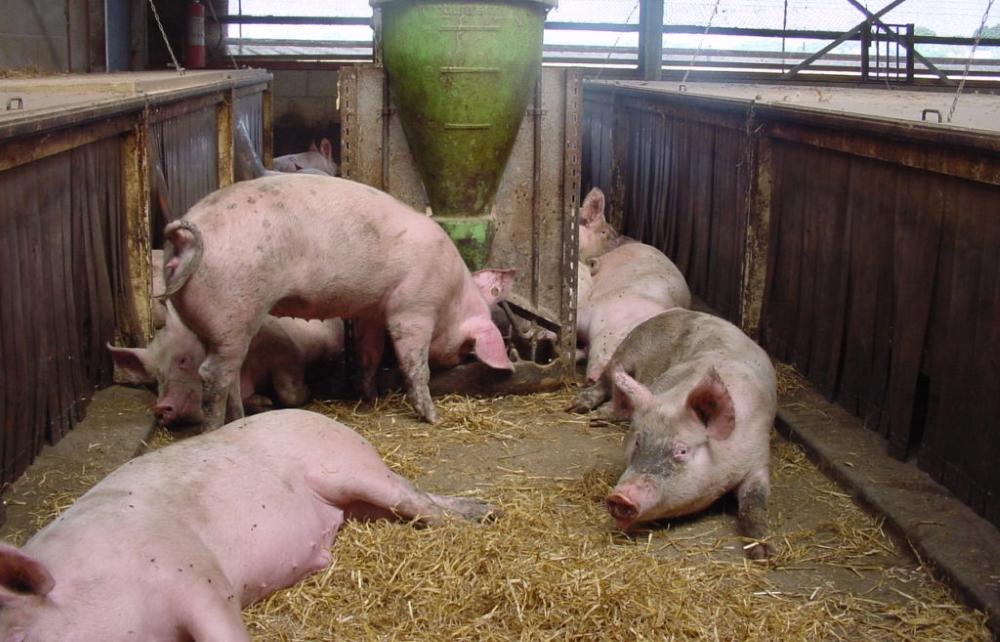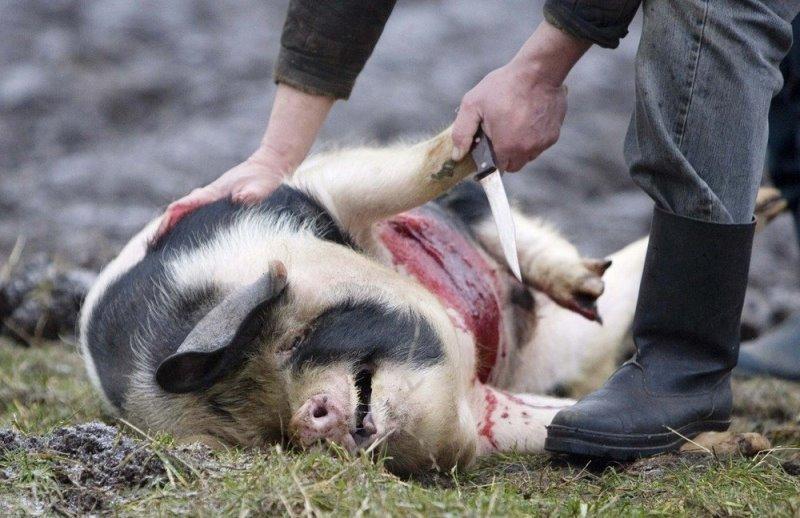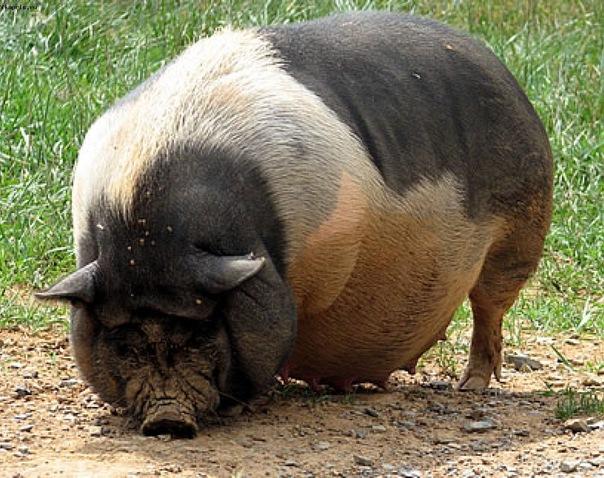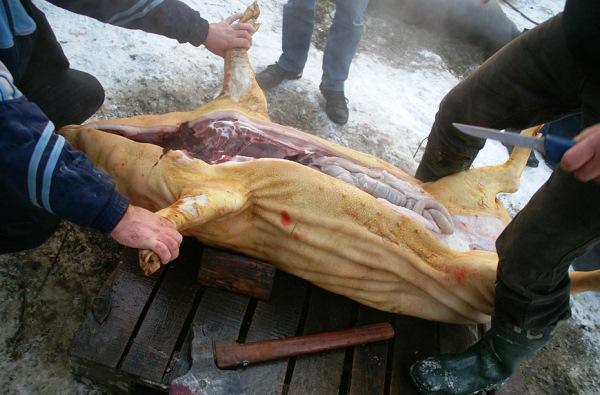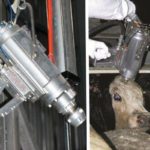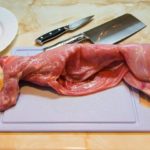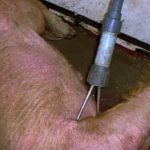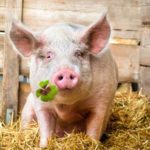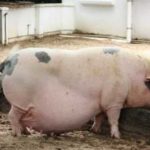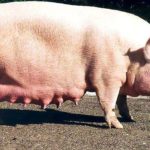A difficult and unpleasant moment for a novice pig farmer is the final stage - slaughtering the animal. When figuring out how to slaughter a pig yourself, you need to carefully study the process and personally visit the slaughter several times to understand the nuances.
Preparation for slaughter
Before slaughtering a pig, you need to perform a number of preparatory steps that will help you avoid mistakes. Including, you need:
- Invite a veterinarian to examine the animal and obtain the document required for the subsequent sale of meat.
- Find an oblong, rigid knife with a sharpened blade, a burner for processing a pig carcass, a cutting surface, reliable ropes, a container for blood and rags.
- Half a day before killing the pig, they stop feeding it and only give it something to drink. This helps cleanse the animal's intestines and improve the quality of the pork. Also, a small hunger strike will make it easier to lure the cattle out of the barn by offering any food.
Selecting a period and time
In the summer, pigs are slaughtered early in the morning, while there is still slight coolness and flies are not active. It should be borne in mind that the process will take a couple of hours if all the work is carried out by one person.
If there is a covered area, it is possible to kill a pig and cut up the carcass even in heavy rainfall. In winter, animals can be slaughtered regardless of the time.
A significant nuance when choosing the time to slaughter a pig is the physical condition of the animal. If the pig is in heat, then you will need to calculate 2 weeks after the end of heat. You should not start the procedure earlier, since certain hormones in the animal’s blood will worsen the taste of the pork.
Slaughter process
There are several methods for slaughtering pigs. In order not to deteriorate the quality and taste of meat products, you need to choose the appropriate method of slaughtering the animal, taking into account your own skills and capabilities.
In the neck
So that the pig does not suffer too much, and the quality of the meat remains good, you can stab the animal in the carotid artery. This method is considered the safest and simplest, therefore it is more suitable in the absence of practical experience. For slaughter, the pig is fixed upside down and a deep container is placed underneath to drain the blood.The puncture is made behind the ear, retreating 2-3 cm. The animal is cut with a sharpened knife and turned over on its side, trying to press it more tightly to the surface. As the blood bleeds out, the pig dies. As a rule, the neck slaughter method is used for miniature breeds.
In heart
Before cutting a pig, it is placed on its side and securely secured by its legs, or outside help is used to hold the animal in a stationary position. Armed with an oblong thin knife with a blade of 30 cm, they stab the pig between the third and fourth ribs, where the animal’s heart is located. The blade is left in the animal until the pig calms down, after which it is wiped with a clean rag.
Use of firearms
In rare situations, weapons are used to slaughter livestock at home. The method is suitable for hunters, since sufficient accuracy is required when shooting a pig. A miss will frighten the animal and provoke the production of substances that impair the quality of the meat product.
It is not necessary to tie the pig - just lure it into firing range.
You can first stun the animal with a sledgehammer, which simplifies the work when slaughtering a large male yourself. They kill a pig with a single shot to the forehead. If hit accurately, the animal will die quickly, and this will be more humane than cutting the throat or puncturing an artery. At the same time, experienced farmers try to avoid the use of weapons and slaughter a pig correctly with a sledgehammer and a sharp blade.
Stun gun
The need to stun the animal with a stun gun arises with large boars, which are often very active. The boar is carefully struck with a shocker, and then thrown on its side and slaughtered by puncture in the heart or carotid artery.
Piglets
Sometimes a pig is killed at an early age, starting at a few months old. Such piglets are called dairy pigs, and their meat is considered softer and tastier. In some situations, it is more profitable to slaughter young piglets, since their further raising and care will not be economically feasible. For example, the Vietnamese breed is always slaughtered at the age of three months.
No additional assistance is required to slaughter a suckling pig.
It will be difficult to cope on your own only if the animal’s weight exceeds 20 kg. The piglet is placed sideways on the prepared surface and a puncture is made in the neck, after which the carcass is cut up. There is no need to stun the animal first, since it is easier to slaughter a small pig than a large male. The piglets are weaker and cannot offer significant resistance. If animals are very active or lack experience, slaughter is carried out according to standard rules, as for adults.
Bleeding
An important piece of advice for novice pig farmers is the mandatory bleeding of pigs. The presence of blood in meat has a bad effect on its quality, imparts a sharp taste and causes accelerated spoilage. To avoid negative consequences, you need to try to bleed the pig as much as possible after slaughter. If the slaughter method is used by puncturing the carotid artery in an upright position, then most of the blood comes out of the animal carcass.
If the pig has been killed by puncturing the heart, blood clots will accumulate in the chest cavity. It is opened and the accumulated blood is scooped out with any suitable device, and the clots are removed with a rag or napkin.In order for the blood to flow out of the animal better, it is recommended to hang the carcass by the legs and leave it hanging for 5-10 minutes. The collected blood does not have to be thrown away, since it is suitable for preparing some types of sausages and various dishes.
Skinning
After bleeding the cattle, they proceed to basic processing. The pig's skin is singed black to remove the harsh bristles. To do this, the entire surface of the carcass is treated with a blowtorch, first on one side, then on the other. Firing is performed evenly to form an even dark layer. It is important not to hold the blowtorch in one position for too long to prevent cracking of the leather.
The belly is burned less intensely than the back side, since the skin on the belly of cattle is tender and cracks more easily. In case of damage, subsequent cleaning becomes more difficult and the presentation of the carcass deteriorates. Experienced pig breeders roast the skins using straw, which gives the meat products an unusual taste. For this purpose, the slaughtered and bled animal is covered with clean straw without foreign elements and set on fire.
After finishing firing, the carcass must be thoroughly washed and cleaned. To simplify the procedure, the carcass is placed under a thick cloth and poured with boiling water. As a result, the skin is steamed, and it becomes easier to clean. The fabric is left on the carcass for 5-7 minutes, after which the carbon deposits and dirt are carefully removed using a dull knife. When peeling, it is important not to damage the integrity of the thin skin. To more effectively remove contaminants, the carcass is constantly watered with water, and before cutting, it is wrapped in cloth and allowed to steam thoroughly. As a result, the skin softens and is easier to cut.
Cutting
The cutting process is performed in a certain sequence to avoid compromising the integrity of the gallbladder and bladder and not to damage the internal organs. The sequence of actions is as follows:
- they cut off the head and cut out an apron on the abdomen;
- they cut through the sternum in the central part, feel the esophagus, tie its end and pull it out of the carcass;
- the heart, diaphragm, lungs, intestines and stomach are removed;
- the liver is pulled out and the gallbladder is cut off;
- remove all fat, cut off the kidneys and discard the bladder;
- wipe the carcass with dry rags from the outside.
Useful tips for beginners
For inexperienced farmers, slaughtering a pig is a difficult task, so it is important to consider a number of tips. It is recommended to stun cattle before slaughter. It is easier to pierce the neck than the heart. The kick between the ribs is more suitable for professionals. Before stabbing, it is better to see how professional farmers perform the procedure, since theoretical knowledge is not enough to prevent all problems and understand the subtleties. If a person is not mentally prepared, then it is better to entrust the slaughter to specialists.
Pork storage after slaughter
For long-term storage of meat products after slaughter, favorable conditions must be provided. If it is necessary to store pork for up to three to six months, the meat is frozen. The disadvantage of this method is the reduction in nutritional value and changes in taste characteristics.
You can also store meat in the refrigerator at a temperature of 0 to -2 degrees. The pork will retain its taste, but the shelf life will be no more than 12 days. It is better to use plastic, glass or enamel dishes as a container for meat. It is not recommended to store products in plastic bags.

